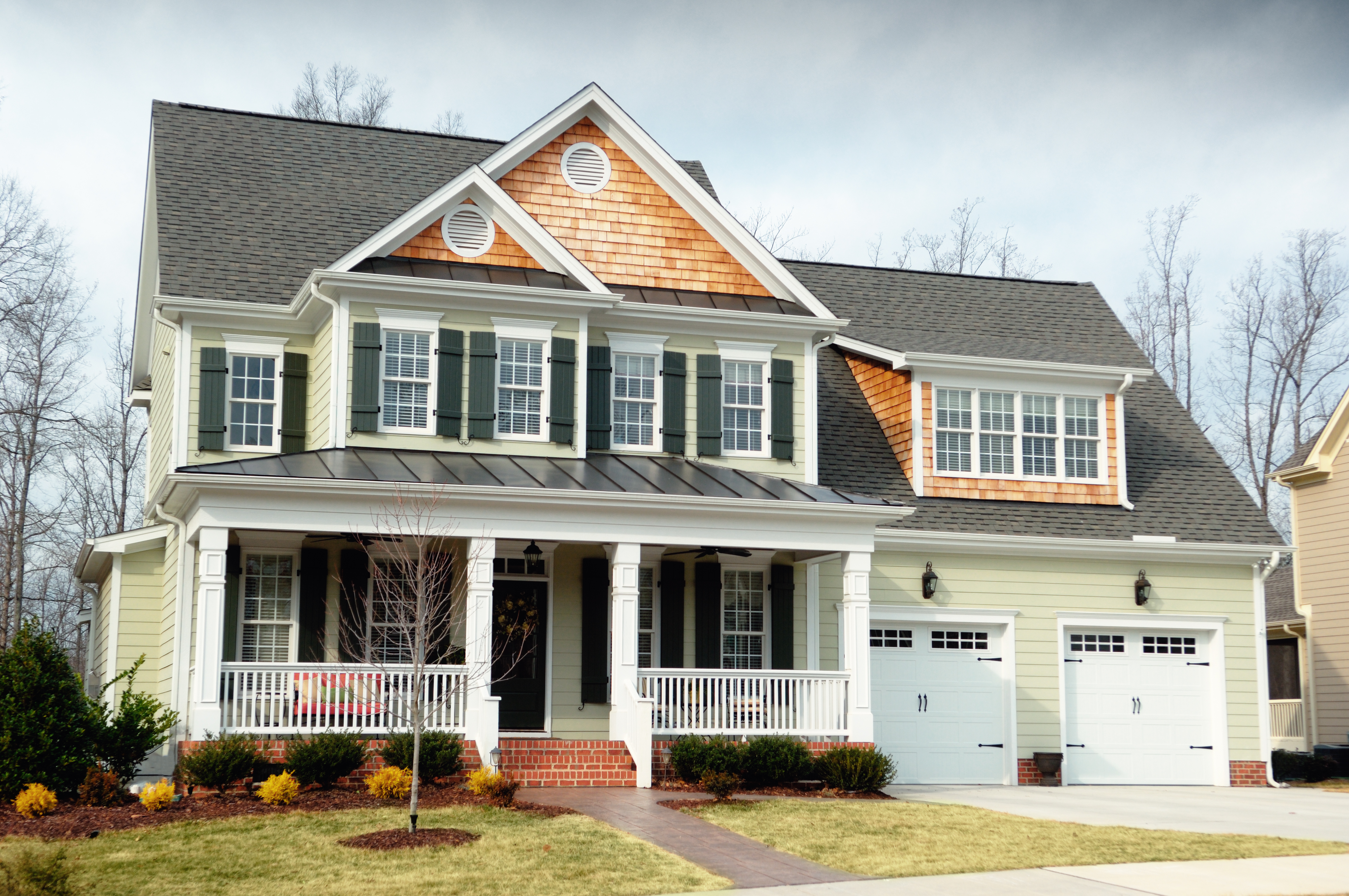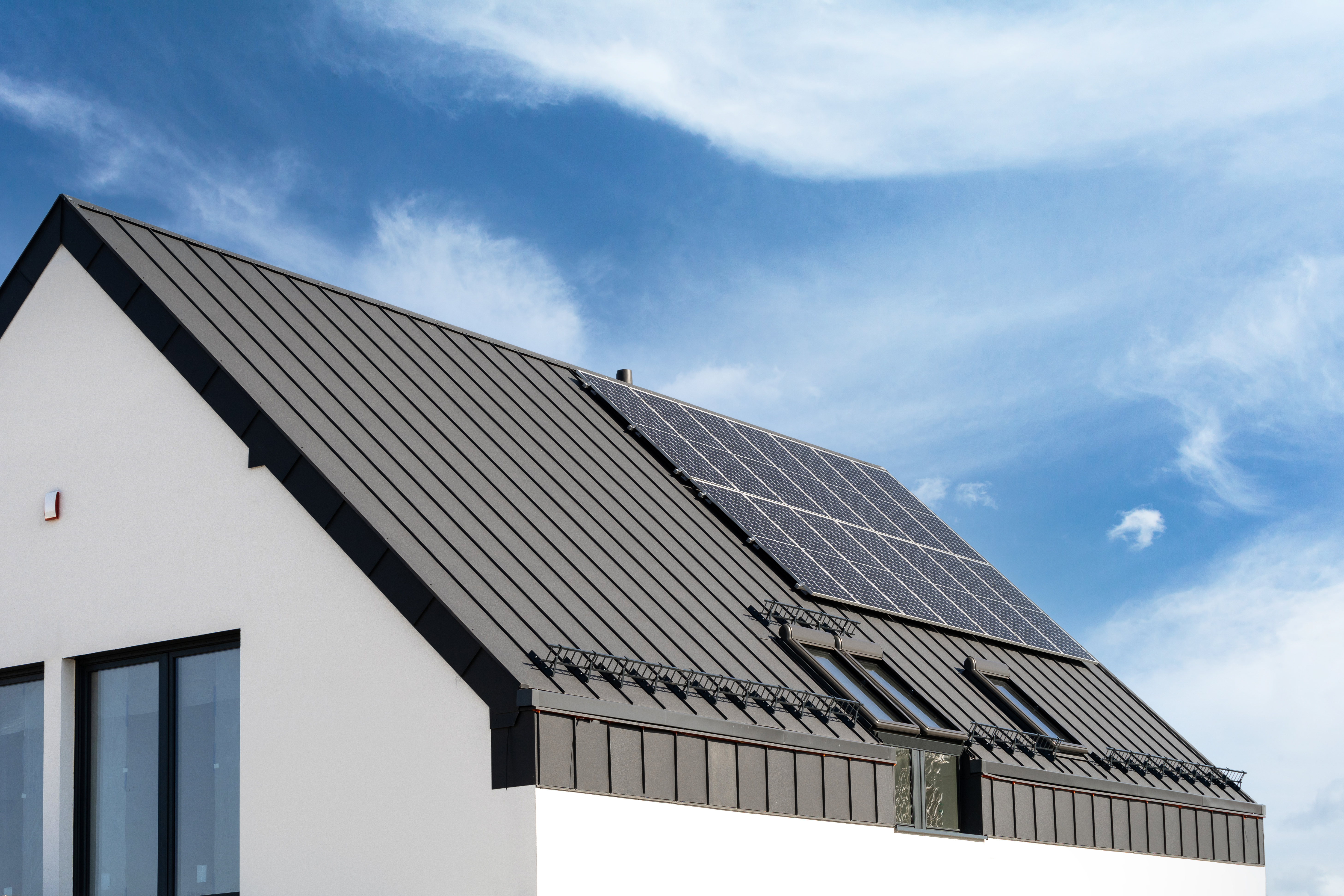
Dealing with a visibly damaged roof or leak? Learn about roof repair costs in Columbus to see how much you’ll need to budget for a permanent solution.
You'll pay between $6,000 and $23,000 for the cost of rubber roofing on a standard-sized roof, or an average of $12,000.


Rubber roof shingles are the most affordable type of rubber roof but are only suitable for sloped roofs.
Think about energy efficiency when deciding on a rubber roof. White TPO roofs, for example, reflect light and can naturally reduce cooling costs in hot climates.
Adding insulation under your rubber roof will increase the cost but can help you save on utility bills in the long run.
EPDM and PVC rubber roofs require resealing every few years, so consider ongoing maintenance costs for long-term budgeting.
A rubber roof costs between $6,000 and $23,000 to install on average, which is considerable compared to other roofing materials. However, rubbing roofing offers durability and a host of other benefits. Rubber roofs end up costing between $4 and $13 per square foot. Roof size, membrane type, and labor fluctuations are the main drivers of price.
Don't let rubber roof prices deter you from making this valuable and practical upgrade. Few things are more important than keeping a roof over you and the people you love—bonus points if you install a long-lasting and cost-effective solution.
Roof size will influence how much your rubber roof installation will cost. Smaller roofs require less material and less installation time, leading to a lower cost overall. Larger roofs will use more material and be more time-consuming to install, so expect to pay more for a large roof.
| Square Footage | Average Cost |
|---|---|
| 500 | $2,000–$6,500 |
| 1000 | $4,000–$13,000 |
| 1500 | $6,000–$19,500 |
| 2000 | $8,000–$26,000 |
| 2500 | $10,000–$32,500 |
| 3000 | $12,000–$39,000 |
Roofing labor costs can run between $2 and $6 per square foot on top of material costs, or $3,000 to $10,000 total in labor for the project. Labor costs account for an average of 45% to 65% of the total installation costs of a rubber roof and will be factored into the quote provided by your roofer.
Rubber roof installation costs more in urban areas and in remote locations where materials may be hard to obtain or there may be a limited number of contractors who install rubber roofs. Suburban and rural areas will see lower costs for rubber roof installation, although expect to pay more in any area with a higher cost of living.
The cost of a rubber roof can vary based on factors including material, complexity, old roof removal costs, and permit fees. Consider these factors when calculating your total project cost.
Single-ply membrane roofs come in three common materials: thermoplastic polyolefin (TPO), ethylene propylene diene monomer (EPDM), and polyvinyl chloride (PVC), and rubber roofs may also consist of rubber composite shingles. TPO roofing is the newest material out of the four and tends to carry the highest price tag, but all four materials are relatively comparable in price. The range for each material type depends on brand, quality, and exact material composition.
| Rubber Roof Material | Cost per Square Foot |
|---|---|
| TPO | $4.50–$14 |
| EPDM | $4.25–$12 |
| PVC | $5.25–$12.50 |
| Shingles | $3–$13 |
Roof installation requires a building permit, so check with your municipality or have your roofer confirm permit requirements and fees before you start the project. Permit fees vary widely depending on location, but expect to pay anywhere between $100 and $1,000 for a permit to complete roof work.
Removing your old roof to prepare for a new roof installation costs an average of $1 to $2 per square foot. Consult your roofing pro to see if removal costs are included in your price quote or if you’ll need to pay an additional fee for removal.
Roofs that have multiple roof penetrations like chimneys, vents, or skylines will cost more since a rubber roof will need to be cut and sealed precisely around each obstacle. Homes with complex rooflines may also incur extra costs, as a new roof will take longer to install and require precision on each different roof feature.
Installing a rubber roof is not a suitable job for a DIY. Although rubber roofing is installed on flat or low-slope roofs, roof installation still presents a serious risk of injury, as well as the potential for damage due to improper installation. You’ll spend more to hire a local rubber roofing installer, but they have the tools and expertise to do the job safely and correctly.
Here are some reasons why you should always hire a roofing contractor for this type of job:
Improperly installed rubber roofs can lead to leaks and water damage that requires costly repairs.
DIY roof installation may void your roof warranty or homeowners insurance and poses a risk of falls and serious injury.
Rubber roofers have the necessary equipment and expertise to complete the job safely and in accordance with building codes.
Reputable pros carry insurance, and some offer their own warranties and guarantees.
Pros can often get materials for a lower cost than homeowners, so you pay more for installation, but save on material costs.
Rubber roofs are easier to repair than other kinds of roofs, and small tears or holes can be quickly patched to prevent further damage. Rubber roofs can last between 30 and 40 years, but if your roof is more than 20 years old and has needed multiple repairs, you may be better off investing in the cost to replace the roof rather than continuing to repeatedly patch it. A roof repair pro can assess your rubber roof’s condition and advise you if repair or replacement is the better option.
Rubber roofing can be a relatively affordable option, but there are still ways you can save even more on installation.
Schedule your roof installation during a slow season. Some roofers may offer discounts during the off-season to keep their schedules full.
Choose a lower-cost material. Be sure to use at least the minimum recommended material for your roof, but opt for a more budget-friendly choice rather than a higher-end material if possible.
Get a minimum of three quotes from qualified roofers. Clarify what each quote includes and then compare for the best value.
A new roof can be an enticing factor when it comes time to sell your home, since it decreases the chances that the roof will need replacement or serious repairs in the near future. Rubber roofs offer improved energy efficiency and protection from weather and wind damage, and you’ll likely see some return on your initial investment reflected in your home’s value.
While you don’t need to know the exact figures, be prepared to talk about the square footage and slope of your roof, along with roof access and obstructions like a chimney.
Ask your rubber roofing pro about materials—not all rubber roofing is the same, and a pro can help you find a style that works within your budget.
Don’t forget to discuss the project timeline, as you may need to vacate your house during the installation.
If you’re considering energy-efficient upgrades, such as solar panels, now is the time to discuss them with your contractor.
Home is the most important place on earth, which is why Angi has helped more than 150 million homeowners transform their houses into homes they adore. To help homeowners with their next project, Angi provides readers with the most accurate cost data and upholds strict editorial standards. We extensively research project costs to develop the pricing data you see, so you can make the best decisions for you and your home. We rely on reputable sources, including the U.S. Bureau of Labor Statistics, academic journals, market studies, and interviews with industry experts—all to ensure our prices reflect real-world projects.
Want to help us improve our cost data? Send us a recent project quote to [email protected]. Quotes and personal information will not be shared publicly.
From average costs to expert advice, get all the answers you need to get your job done.

Dealing with a visibly damaged roof or leak? Learn about roof repair costs in Columbus to see how much you’ll need to budget for a permanent solution.

Learn about roof replacement costs in Columbus and what factors are at play to budget accurately and make sure you’re getting a fair price.

A metal roof can defend your home against Ohio’s varying weather conditions. Learn how much a metal roof costs in Columbus, OH.

While there are various styles, the right roof drip edge type for your home will depend on your roof type and the rainfall in your climate.

If you need a new flat roof, learn about tar and gravel roof costs and what can affect your total to make sure you budget accurately.

Follow these four straightforward steps to install hurricane ties. The number of ties and the demand load will impact the project.